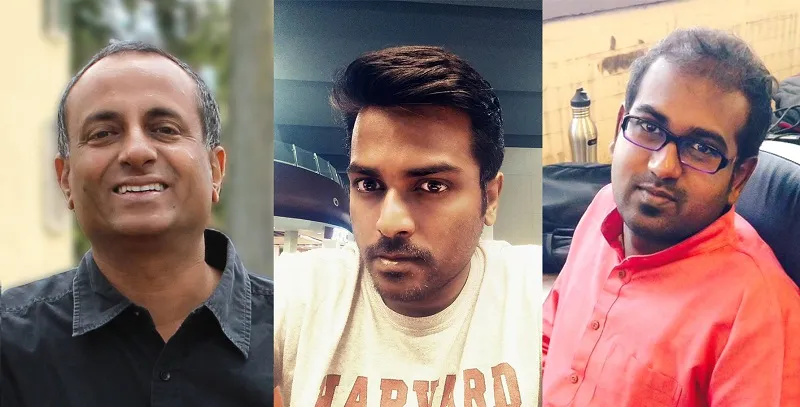Bengaluru-based Purnatva is building IoT solutions that track school children based on visual identity
Vamsi Pottangi believes a life dedicated to building meaningful technology is time well-spent. That’s how Purnatva, the internet-of-things (IoT) startup, was born. Vamsi founded it after nearly a decade spent in Infosys, where he was building deep technology solutions. Eighteen-months ago, he went to S D Shibulal, Co-founder and former CEO of Infosys, with the idea of building an IoT platform that could help corporates (factories and offices) gather information and perform real-time analytics for improved business results. Shibulal had the gumption to advise the young startup that big things start small. He asked him to test his platform on schools, to capture the movement of children without them having to use a wearable.
“The problem sounded easy at first. My team and I went to a large school in Bengaluru and we began writing down the solution rather than implementing it,” says Vamsi. However, it took them four months to understand the problem.

The problem with wearables
Most schools implement a wearable strategy, where a smart card solution is implemented on buses and in schools. This solution captures the data of the person or child when the card is swiped. But, the card is not powered to know whether the child who was assigned the card actually swiped it, or if it was someone else. These solutions work on standard networks like WiFi and Bluetooth radio, but several wearable companies did not realise the power of integrating the camera to figure out the identity of the person and fingerprint identification to determine the physical reality of the child. Therefore, just building apps and tracking the movement of the bus was not a complete solution.
“Tracking the child from home to school and back, along with the designated person picking them up after school needed to be implemented too,” says Vamsi.
The child walks up to the van, her picture is identified on a tablet placed in the van. She touches her photo and the school gets an uplink that this student in that designated route has boarded the bus. If needed, this information could be linked all the way to the classroom attendance register if it was tab-based. The same process works when the child is dropped home, except then the bus driver or the concierge swipes the icon of the picture of the person designated to take the child home.
It may sound like a simple enough solution, a lot of data extraction goes into bringing it about. Effectively, the solution protects the entire school and parent ecosystem on a legal basis due the availability of real data and a solution. “This platform can be extended to the operation of machines in healthcare and in factories,” says Ajay Prasad, Head of Sales And Marketing at Purnatva, adding that the platform can integrate all devices and nodes.
“Every IoT startup must define objectives and know the ecosystem before it implements solutions for corporate,” says Shibulal, former-CEO of Infosys.

The users
One of the user of the Purnatva product was a preschool. “The integration of Falcon was from a process point of view and was pretty seamless,” says V K Manikandan, Director, Kiddo Enterprises. With such little children, it is crucial for a preschool to be on top of the security of each child and have details on who picks it up. Before Purnatva came on board the school’s records were manually maintained. “This was subject to human intervention and there were a lot of issues,” adds Manikandan.
Until last year, Samhita Academy, having a student body of 900 children, maintained a manual system for transport records. “Before Purnatva’s solution, we had multiple factors to consider; children being dropped at the wrong stop, children sleeping in the bus and missing their stop, taking a different route in the evening and many others,” says Asha Thomas, Executive Director of Samhita Academy. Today, the school has integrated all information (parents, students, buses, map committee) available in a single database.
Currently, Purnatva works with 25 schools in five cities. It business model is charging schools on a per-user basis. The school, in turn, charges the parents to implement such a solution. Now that it has anchor customers in education, in a couple of years the company hopes to customise similar solutions for industry verticals like retail, automobile and government. “For now we have our hands full with schools,” says Vamsi.
The competition
There are several startups in the IoT space. Startups targeting schools include Northstar, HandsTel and Traqmatix. But, startups that are building IoT companies without an anchor customer will have a tough journey ahead. Many companies are yet to scale up beyond their seed rounds because their technology is created in the one-size-fits-all format. This formula will not work at the implementation stage. For example, an automobile company may want to bucket the data from the robots of Plant A, which is an assembly line, with robots in Plants B, C and D to match the production cycle for the next fifteen days. This requires the creation of an IT bridge between the robots, where the robots of Plant A will schedule manufacturing based on the components manufactured by robots B and C. These are some of the future applications of the Purnatva product. Such platforms from IoT companies, in India, have the capability to work with corporates and their manufacturing plants in preparing for the future of information technology. The four-member core Purnatva team have recently raised $ 1 million from a high net worth individual and with their technology the company is on its way to becoming a large IoT business.







